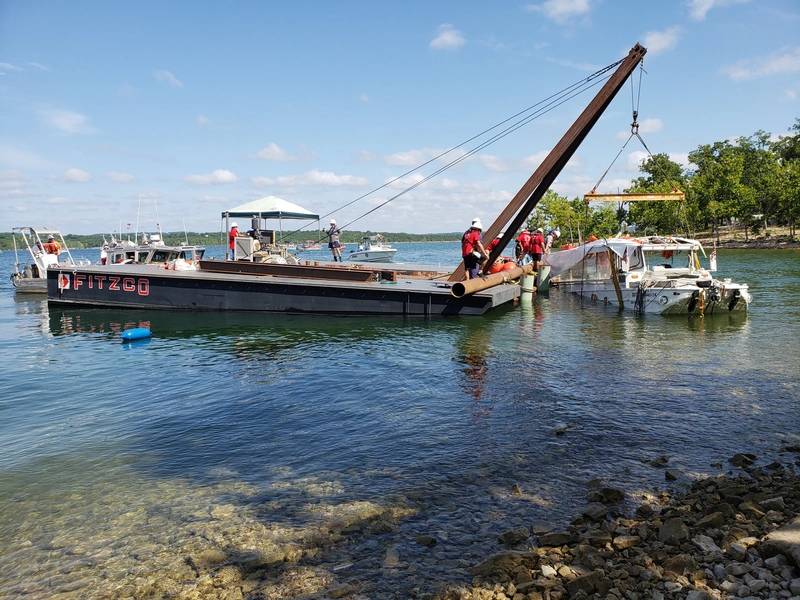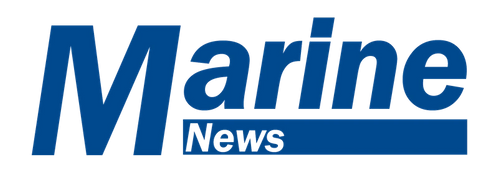Column
Passenger Vessels
Choose Wisely: A Deeper Dive into Domestic Passenger Vessels SMS Proposed Rulemaking
On January 15, 2021, the U.S. Coast Guard issued an Advanced Notice of Proposed Rulemaking (ANPRM) for Safety Management System (SMS) requirements in the domestic passenger vessel industry (Docket No. USCG-2020-0123). This requirement will have the largest implications on the domestic passenger vessel industry since the revisions of 46 CFR Subchapter T & K in the mid-90s. However, the question remains, is it necessary?
Richard J. Paine, Jr., Vice-President, HSSQE, the Hornblower Group
A fire aboard the 75-foot dive boat Conception killed all 33 passengers and one of the vessel’s six crew members in September 2019.
Photo: Ventura County Fire DepartmentOver the last three decades, the effectiveness and need for Safety Management Systems (SMS) have been at the forefront of discussion by operators and regulators in all maritime sectors, both domestically and internationally. The most recent domestic regulatory requirement was introduced in the tugboat and towing vessel industry with Subchapter M in 2016. The development and introduction of Sub M took nearly a decade to be fully introduced as regulation. Today, the greater domestic passenger vessel industry is facing potentially the same fate (outside of those vessels that already comply with safety management system standards found in 33 CFR 96). This type of decision brings up new questions and concerns to owners and operators. Is this a positive change? Is it necessary? Does it correct the “problem”? Many owners and operators are currently deliberating the pros and cons to this impending and critical requirement. Although, there are many areas of a Safety Management System to be discussed, this article will focus on three key areas to support both sides of the argument: (1) External Audit Certification, (2) Defined Management System Processes and (3) Cost.
Before we dive into the pros and cons, we need to identify a critical historic reference point to better judge the subject at hand. Are you familiar with the date, March 6, 1987? If not, you should be. It is the date of the catastrophic flooding incident involving Ro/Ro and passenger ferry MV Herald of Free Enterprise. The vessel was underway from Belgium to England when it quickly took on water through unclosed bow doors. It sank within minutes, taking the lives of 193 passengers and crew. The reason this incident and date are critical is because this was, at the time, a modern vessel with current technology and manned by highly qualified crew. The cause of this tragedy was a combination of human error, a lack of situational awareness and nonexistent shoreside support by management. This incident has been cited as a driver that led to the development and implementation of the International Safety Management (ISM) Code, the first regulated safety management system by the International Maritime Organization (IMO) in 1993.
Fast forward to 2021 and nearly 35 years later, Safety Management Systems (SMS) are still being discussed to determine their effectiveness and value in preventing catastrophic losses to people, property and the environment. Recent U.S. flagged vessel incidents, such as the Conception dive boat fire in 2019 off of Santa Cruz Island, Calif.; Branson, Mo. Stretch Duck 7 duck boat sinking in 2018 and the U.S. cargo ship El Faro sinking in 2015 have raised the attention of the country and regulators on Capitol Hill. However, before these catastrophic incidents, the domestic passenger vessel industry had been safely operating for years with strong safety records. This conflicting historical assessment of safety in the industry has led to continued ongoing debates on whether any of these previous, or more importantly, future incidents could have been or will be prevented by a SMS.

On July 19, 2018, the duck boat Stretch Duck 7 sank in severe weather on Table Rock Lake near Branson, Mo., killing 17 of the 31 people on board.
Now, let’s dive deeper into both sides of the argument.
(1) External Audit Certification including Third-Party Operators: Currently, the USCG conducts inspections on domestic passenger vessels for safety. Only those operators that elect to participate in a certified safety management system require third-party, non-federal, auditors to verify the effectiveness of their SMS.
Pros:- Industry expertise: Independent auditing bodies offer value by providing an expertise in their field to review a company’s SMS implementation and effectiveness.
- Impartial review: Audits are completed with no conflict of interest.
- Competitive market: Multiple auditing bodies offer owner/operators with alternatives that can meet their budget, drive professional competition and offer scheduling flexibility.
- Existing regulatory enforcement/relationship with the U.S. Coast Guard: The USCG inspection process already exists and involves routine onboard regulatory safety inspections. There is an avenue to expand potential audits through this process.
- Audits are only as good as the auditor: Internal audits can be as effective as an external audit, as long as there remains objectivity by the auditor.
- TPO oversight: Third Party Organizations are not all created equal and will still require oversight to remain in good standing with regulators to audit operators. This becomes one more additional regulatory oversight for the USCG that is continually asked to do more with less resources.
(2) Defined Management System Processes: A management system clearly identifies certain aspects of how an operation manages safety. This can include written emergency plans, procedures, training and other areas of focus.
Pros:- Clear Identification of roles/responsibilities: SMS clearly require a company to identify roles and responsibilities, including master’s overriding authority.
- Written procedures: Written procedures are required in most SMS, which helps communicate to crew and provides tangible documents for training and review.
- Company commitment: SMS requires management to develop a written policy that clearly demonstrates their commitment and support of safety.
- Safety culture isn’t written: A written binder of procedures, processes and duties doesn’t single-handedly correct safety without a safety culture that is formed and supported through organizational leadership. A safety culture is more effective than written requirements found in a traditional SMS.
- Written doesn’t mean right: Procedures can be effectively implemented through an operation without them being written for reference. Communication, accountability and training are not required to be written to demonstrate competence and understanding.
- One size doesn’t fit all: There may be more value for larger operations and fleet sizes, but some operators are single vessel seasonal operations where the owner is the master, the mechanic, the safety professional and the accountant.
(3) Costs of implementation: Safety is sometimes difficult to quantify in financial terms because “safety” doesn’t generate revenue, instead, its value to a company is through the return on investment (ROI) and preventing future loss.
Pros:- Safe work environment: Applying safety resources, such as training, personal protective equipment, reward programs and safety management has a history of yielding safer work environments.
- Lower insurance: Insurance carriers will offer better terms/premiums when they determine an operator is successfully managing their risk. A functioning and financially supported safety management system can reduce incidents and reduce the costs spent on each claim, shared by both the insurance company and through operators’ deductibles.
- Employee retention: Employees want to know that the company is committed to their safety. SMS provides a commitment to safety that is communicated through policy and commitment from top leadership. Employees are much more likely to stay at a company when they know the company is committed to safety from the top down.
- Upfront costs: There is a cost to starting a safety management system. Labor costs, job creation, planning and development, training and simple printing material will be very much real expenses in the implementation period of an SMS. Based on the size of the operation, expenses can range from a few thousand dollars to hundreds of thousands of dollars.
- Reoccurring costs: Once the SMS is in place, operators will need to maintain the SMS through continued labor, training, review, as well internal/external audits, routine management, including new job duties.
- TPO market: Third party certifications will carry additional expenses to an operation. The TPO market will be driven by supply and demand. Limited or no alternatives may severely impact the marketplace for owners/operators. Some operations may not be able to afford those reoccurring costs and may require some to go out of business.
- In the end, the decision will be up to operators and regulators to debate the topics at hand. The most important result of this debate will remain properly identifying the measures necessary to prevent future incidents and deaths from occurring. As they say, there always two sides to every story. Choose wisely.
About the Author:
Richard J. Paine, Jr. is a licensed mariner, certified TSMS, ISM, ISO 9001, ISO 14001, ISO 45001 Lead Auditor, as well as DPA with over 25 years of maritime and auditing. He is a member of PVA’s Regulatory and Safety & Security Committees, sits on the NY/NJ Area Maritime Security Committee’s Board of Directors and currently is the vice president, HSSQE for the Hornblower Group.
